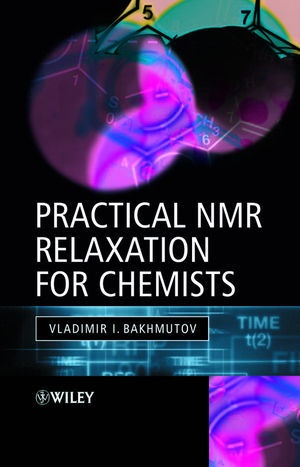Ulteriori informazioni
Informationen zum Autor Dr. Vladimir I. Bakhmutov is a professional NMR spectroscopist at the Department of Chemistry, Texas A&M University, USA. He is also the author of 220 scientific publications including reviews and book chapters. Klappentext This book demonstrates how NMR relaxation can be applied for structural diagnostics of chemical compounds, recognition of weak intermolecular interactions, determinations of internuclear distances and lengths of chemical bonds when compounds under investigation can exist only in solutions.* Written as a textbook for chemists, demanding little background in physics and NMR* Its practical approach helps the reader to apply the techniques in the lab* First book to teach NMR Relaxation techniques to chemists Zusammenfassung This book demonstrates how NMR relaxation can be applied for structural diagnostics of chemical compounds, recognition of weak intermolecular interactions, determinations of internuclear distances and lengths of chemical bonds when compounds under investigation can exist only in solutions.* Written as a textbook for chemists, demanding little background in physics and NMR* Its practical approach helps the reader to apply the techniques in the lab* First book to teach NMR Relaxation techniques to chemists Inhaltsverzeichnis Preface. Chapter 1. How and why nuclei relax. 1.1. Nucleus in the magnetic field. 1.2. Spin-lattice and spin-spin nuclear relaxation. 1.2.1. Macroscopic magnetization: relaxation times T1 and T2. 1.3. Molecular motions as reason of nuclear relaxation. 1.3.1. Correlation times and activation energies of Molecular Motions. 1.3.2. Isotropic and anisotropic molecular motions. 1.4. Bibliography for Chapter 1. Chapter 2. How to measure the NMR relaxation times. 2.1. Exponential and non-exponential nuclear relaxation. 2.2. Measurements of spin-lattice relaxation times. 2.3. Measurements of selective and bi-selective T1 times. 2.4. Determinations of T1( and T2 times. 2.5. Preparation of samples for relaxation experiments. 2.6. Bibliography to Chapter 2. Chapter 3. Errors in Determinations of Relaxation Times. 3.1. Instrumental errors. 3.2. Incorrect parameters for T1, T2 measurements and T1, T2 calculations. 3.3 Coupled nuclear relaxation. 3.4. Chemical exchanges. 3.5. Bibliography to Chapter 3. Chapter 4. NMR relaxation by dipole-dipole and quadrupole interactions. 4.1. The intramolecular dipole-dipole relaxation: homo- and hetero-nuclear dipolar coupling and the spectral density function. 4.2. Haw to reveal the presence of the dipolar mechanisms. 4.2.1. NOE as a test for dipole-dipole nuclear relaxation. 4.2.2. Evaluations of the dipolar contributions from selective and non-selective T1 times. 4.3. Intermolecular dipole-dipole interactions. 4.4. Electric field gradients at quadrupolar nuclei. 4.5. Nuclear quadrupole coupling constant as a measure of the electric field gradient. 4.6. Quadrupole relaxation. 4.7. Bibliography to Chapter 4. Chapter 5. Relaxation by chemical shift anisotropy, spin-rotation relaxation, scalar relaxation of the second kind and cross-mechanisms. 5.1. Relaxation by chemical shift anisotropy. 5.2. Spin-rotation relaxation. 5.3. Interference mechanisms of nuclear relaxation. 5.4. The scalar relaxation of the second kind. 5.5 Bibliography to Chapter 5. Chapter 6. Nuclear relaxation in molecular systems with anisotropic motions. 6.1. Spin-lattice nuclear relaxation in ellipsoid molecules: Temperature dependences of T1times. 6.2. How to reveal anisotropic molecular motions in solutions. 6.3. Nuclear relaxation in the presence of correlation time distributions. ...

